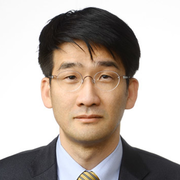Introduction
The partition of Asia along ideological lines after World War II brought great suffering to the
Korean people. The nation was divided along the 38th parallel in 1945 and became the
battleground for an internationalized civil war from 1950 to 1953, pitting South Korea and the
United States against North Korea and China, with the Soviet Union in the background.
Although the Cold War has since ended, the Korean question remains unresolved.
Will a reunified nation-state become a reality for the Korean people? This question has internal, inter-Korean, and international dimensions: What kind of a political and economic system should reunified Korea have? How should Koreans overcome national division and move toward unification? How should the Korean nation position itself as an international player? For the first two dimensions, there is a broad consensus in South Korea that a democratic market economy should be the objective and “change through rapprochement” – rather than democracy transplantation through regime change – would provide the best chance to realize this vision. As for the international dimension, placing Korean unification within the broader context of regional integration may be an effective geopolitical strategy for the Korean nation.
Just as Germans and their neighbors agreed to make reunified Germany an integral part of Europe rather than risk the emergence of an unhinged revisionist power, Koreans and their neighbors may come to see regional integration as a critical component of the solution to the Korean question. As a divided land-bridge in Asia, Korea has much to benefit from regional integration. By contrast, a maritime-continental confrontation in Asia is not in the interest of the Korean people, as it would perpetuate national division and increase the risks of military conflict on the Korean peninsula. This line of geopolitical thinking has tended to guide South Korea’s perspective on regional multilateralism in Asia, especially since the end of the Cold War and the restoration of democracy in the late 1980s.
To explore these questions and their impact on Korean views of community-building in Asia, this chapter is organized as follows. The next section looks at South Korea’s evolving perspective on regional multilateralism in Asia since the inception of the republic in 1948.
Section III covers current approaches and attitudes toward regional multilateralism. It compares U.S.-centric, Asia-centric, and U.S.-in-Asia approaches, and analyzes recent trends in South Korea’s foreign policy. The concluding section looks at South Korea’s geopolitical choices for the future.
The Brookings Institution is committed to quality, independence, and impact.
We are supported by a diverse array of funders. In line with our values and policies, each Brookings publication represents the sole views of its author(s).




